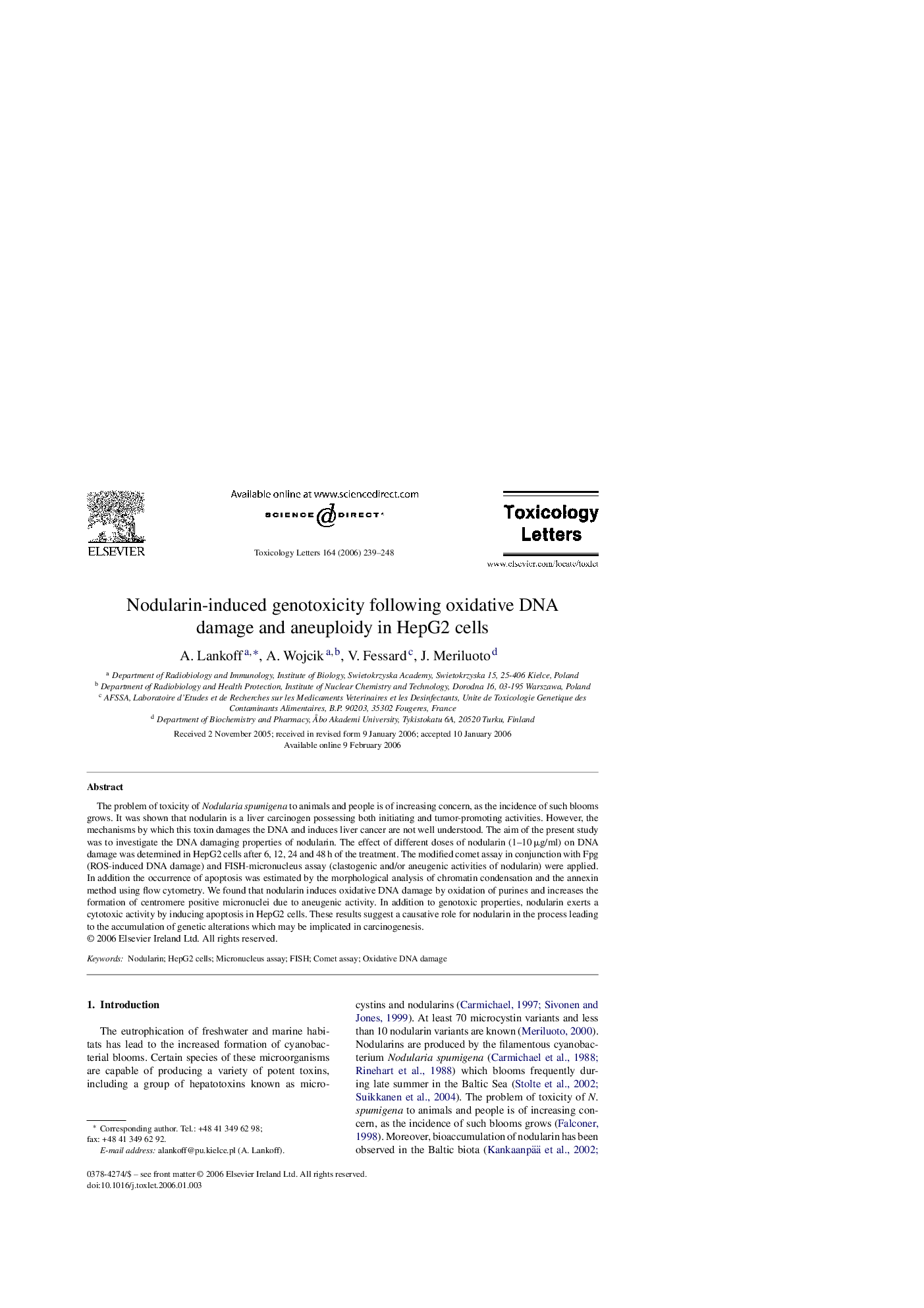| Article ID | Journal | Published Year | Pages | File Type |
|---|---|---|---|---|
| 2601667 | Toxicology Letters | 2006 | 10 Pages |
The problem of toxicity of Nodularia spumigena to animals and people is of increasing concern, as the incidence of such blooms grows. It was shown that nodularin is a liver carcinogen possessing both initiating and tumor-promoting activities. However, the mechanisms by which this toxin damages the DNA and induces liver cancer are not well understood. The aim of the present study was to investigate the DNA damaging properties of nodularin. The effect of different doses of nodularin (1–10 μg/ml) on DNA damage was determined in HepG2 cells after 6, 12, 24 and 48 h of the treatment. The modified comet assay in conjunction with Fpg (ROS-induced DNA damage) and FISH-micronucleus assay (clastogenic and/or aneugenic activities of nodularin) were applied. In addition the occurrence of apoptosis was estimated by the morphological analysis of chromatin condensation and the annexin method using flow cytometry. We found that nodularin induces oxidative DNA damage by oxidation of purines and increases the formation of centromere positive micronuclei due to aneugenic activity. In addition to genotoxic properties, nodularin exerts a cytotoxic activity by inducing apoptosis in HepG2 cells. These results suggest a causative role for nodularin in the process leading to the accumulation of genetic alterations which may be implicated in carcinogenesis.
